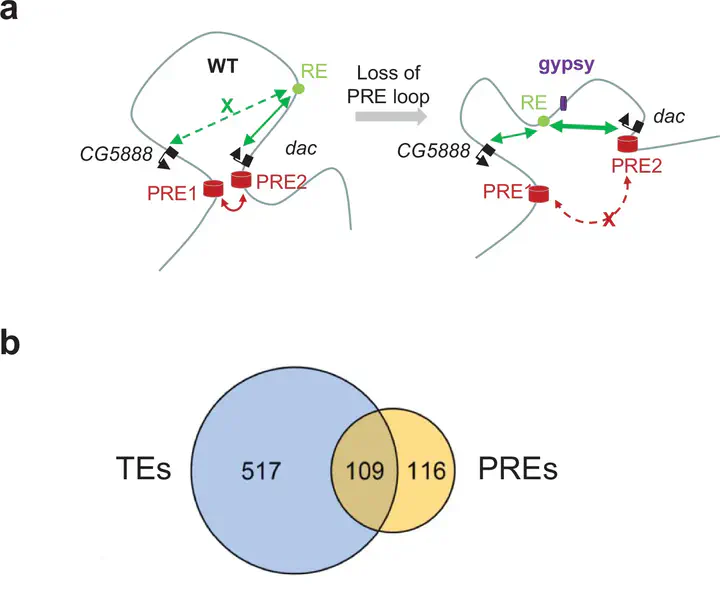Paper alert: A PRE loop at the dac locus acts as a topological chromatin structure that restricts and specifies enhancer–promoter communication
Read the paper online
or download it here
.
Congrats Sandrine and co-authors!

Three-dimensional (3D) genome folding has a fundamental role in the regulation of developmental genes by facilitating or constraining chromatin interactions between cis-regulatory elements (CREs). Polycomb response elements (PREs) are a specific kind of CRE involved in the memory of transcriptional states in Drosophila melanogaster. PREs act as nucleation sites for Polycomb group (PcG) proteins, which deposit the repressive histone mark H3K27me3, leading to the formation of a class of topologically associating domain (TAD) called a Polycomb domain. PREs can establish looping contacts that stabilize the gene repression of key developmental genes during development. However, the mechanism by which PRE loops fine-tune gene expression is unknown. Using clustered regularly interspaced short palindromic repeats and Cas9 genome engineering, we specifically perturbed PRE contacts or enhancer function and used complementary approaches including 4C-seq, Hi-C and Hi-M to analyze how chromatin architecture perturbation affects gene expression. Our results suggest that the PRE loop at the dac gene locus acts as a constitutive 3D chromatin scaffold during Drosophila development that forms independently of gene expression states and has a versatile function; it restricts enhancer–promoter communication and contributes to enhancer specificity.